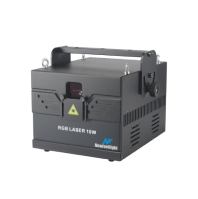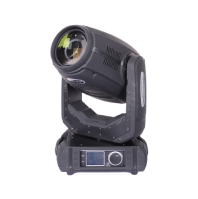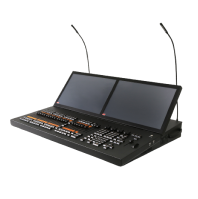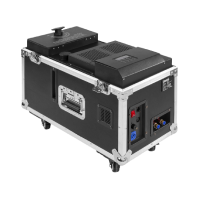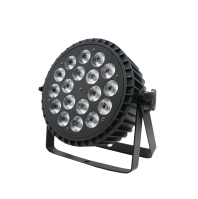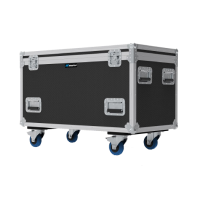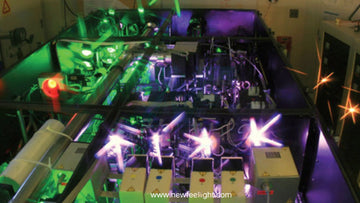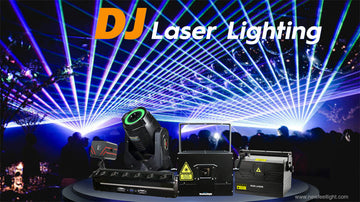Table of Contents
- What Does DMX Stand For in Lighting?
- How Does DMX Work? Behind the Scenes of a DMX Lighting System
- DMX Lighting Meaning in Professional Environments
- Building a Reliable DMX Lighting System
- What Is a DMX Controller for Beginners?
- What Is a DMX Interface?
- Scaling with Multiple Universes and Advanced Protocols
- Why DMX Still Dominates in 2025 and Beyond
In the world of professional lighting control, DMX lighting systems are the foundation of everything from simple event setups to complex, multi-universe concert rigs. But what is DMX, exactly—and how does it function in real-world applications?
Whether you're a system integrator designing a new venue, a lighting rental company upgrading your inventory, or an event producer planning a touring setup, understanding the DMX definition and how to implement DMX lighting control is critical for delivering consistent, synchronized, and scalable lighting performances.
This guide by Newfeel Light explains what is
DMX in lighting, how it works, what you need to build a reliable DMX system, and why it's still the industry standard in 2025 and beyond.
What Does DMX Stand For in Lighting?
The DMX full form is Digital Multiplex, which refers to the way this protocol digitally transmits multiple control signals over a single data cable. In practical terms, DMX is the protocol that allows you to control all your intelligent lighting—moving heads, laser lights, LED panels, fog machines—from a central controller.
So, when people ask “what does DMX mean in lighting”, the answer is: DMX is the language that lighting controllers and fixtures use to communicate with each other, assigning specific instructions to specific parameters (like brightness, color, pan/tilt, gobo, or speed).
The DMX meaning lighting professionals refer to today hasn’t changed much from its original definition—but the systems built on it have become more powerful, flexible, and capable than ever before.
How Does DMX Work? Behind the Scenes of a DMX Lighting System
A typical DMX lighting setup begins with a DMX controller, which sends out a continuous stream of digital data formatted in groups of 512 channels. This block of 512 channels is called a DMX universe. Each channel corresponds to one control parameter of a fixture. For instance, channel 1 might control the dimmer of a fixture, while channel 2 controls the color, and so on.
The signal travels through a dedicated DMX cable—not to be confused with audio XLR cables—connecting from the controller’s DMX output to the first fixture’s DMX input. Fixtures are daisy-chained using the DMX in and out ports on each device.
Each fixture is assigned a DMX address, which tells it which channel(s) to respond to. For example, if a laser fixture uses 15 channels and is set to DMX address 101, it will listen to channels 101–115.
This entire process allows lighting designers and technicians to have real-time, granular control over every fixture in a show. Whether you’re triggering a single cue or running a time-coded sequence, the DMX lighting control protocol ensures accuracy and synchronization.
DMX Lighting Meaning in Professional Environments
When we speak about DMX lighting systems in professional applications, we're referring to a robust, standardized, and highly customizable framework that scales effortlessly. From controlling a single zone of LED wash lights to managing 1,000+ channels of moving lights, strobes, and DMX-compatible laser fixtures, DMX is the underlying architecture.
What is DMX used for? In practical terms, DMX is deployed across:
Concerts and touring productions
Theaters and performing arts venues
Theme parks and architectural lighting
Broadcast studios
Trade shows and corporate event production
Nightclubs and immersive visual installations
Understanding what is a DMX controller and how to program and assign DMX addresses properly is not only essential for installation—it also impacts how easily a system can be maintained, updated, or scaled.
Building a Reliable DMX Lighting System
To create a robust DMX lighting system, professionals typically use the following components:
DMX controller (hardware desk or software-based with interface)
DMX-compatible lights (fixtures with DMX in/out ports and address options)
DMX cables (shielded 3-pin or 5-pin XLR designed specifically for data)
DMX terminators (to close the loop and prevent signal reflection)
Optional: DMX splitters, wireless DMX transmitters, or DMX-over-Ethernet nodes
Each device connected to the system must be addressed correctly. Misaddressed fixtures are one of the most common issues in temporary event setups. To avoid this, having a clear channel map and understanding how DMX channels work is vital.
Some fixtures also allow multiple channel modes—for example, 8-channel, 16-channel, or 24-channel modes—giving users the flexibility to choose how much
What Is a DMX Controller for Beginners?
For lighting professionals just entering the industry or scaling up from analog controls, a DMX controller for beginners can be a great way to learn without overcomplicating the workflow.
Many entry-level software controllers offer:
Drag-and-drop fixture patching
Pre-programmed effects libraries
Visual timelines and cue stacking
MIDI or audio syncing
Brands like LightKey, ShowXpress, and QLC+ are often used by mobile DJs, church AV teams, and small rental houses. More advanced users may graduate to Chamsys, MA Lighting, or ETC consoles as their
DMX lighting control needs expand.
What Is a DMX Interface?
A DMX interface is a hardware device that translates software signals into DMX protocol. It connects your lighting software to your fixtures via DMX in out ports and allows for physical control of real-world lighting hardware.
For laptop-based control, the DMX interface is the bridge between your programming software and the physical devices in your setup.
Scaling with Multiple Universes and Advanced Protocols
As your show grows, you may need more than one universe. In that case, your system must support multiple DMX outputs, either through built-in hardware or Ethernet-based protocols like Art-Net and sACN. These newer technologies send the same digital multiplex data across modern networks, allowing for hundreds of universes and near-zero latency.
While DMX512 remains the core standard, hybrid systems that combine classic DMX with Art-Net routing are becoming the norm for large-scale installations. Knowing what does DMX do and how it fits into these hybrid systems allows production teams to be more flexible and future-ready.
Why DMX Still Dominates in 2025 and Beyond
So, what is DMX lighting in 2025? It’s still the most trusted, flexible, and globally compatible control system for professional lighting. It’s defined by:
Real-time responsiveness
Broad fixture compatibility
High channel precision
Scalability across venues and project types
Integration with newer protocols (Art-Net, sACN)
When your production demands precise lighting cues, fail-safe operation, and creative flexibility, DMX delivers—every time. Whether you’re specifying a system for a touring show, retrofitting a venue, or preparing rental stock, understanding what is DMX lighting control will help you make better decisions on gear, programming, and infrastructure.
Work with Newfeel Light – Your Partner in DMX Lighting Systems
At Newfeel Light, we manufacture and supply a wide range of DMX-compatible lights, laser systems, controllers, and accessories specifically designed for professional use.
We support system designers, rental companies, and production managers with:
Expert pre-sales consultation
Custom DMX fixture integration
Technical documentation and training
OEM & ODM options for scalable control systems
If you're looking to build a future-proof, high-performance
DMX lighting system, we’re here to help.
Contact us for system design support, catalog requests, or partnership opportunities.








